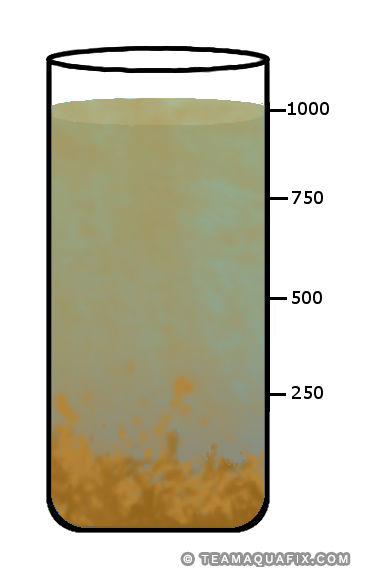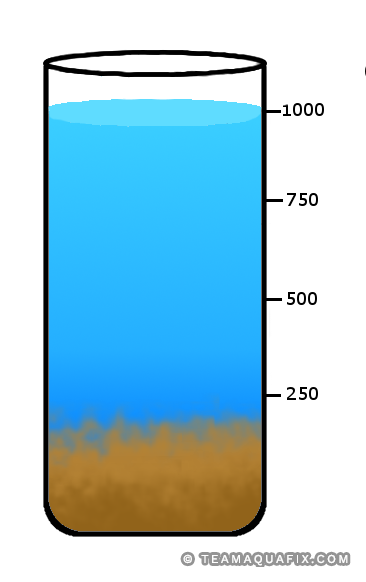What is causing foaming, filaments and BOD violations in your wastewater treatment plant? Knowing your 30 minute settling may tell. The cause of different types of settling will vary and understanding settling will give you more insight on the issues occurring in your plant. A 30 minute settling test will point you in the right direction to diagnose these issues.
When your solids are not settling, this is due to filaments and dead bacteria. Your best option is to use our SmartBOD. Designed for low food to microorganism conditions, SmartBOD will allow for a robust biomass of flock-forming bacteria to form and prevent filamentous bulking and cloudy effluent by introducing biostimulants and micronutrients. Aquafix often prescribes this as a buffer for many situations including septicity, restarting tank/plant, and poor settling. For best result combine with Foam Buster.
The diagram below will give you an idea on better understanding your settling and point you in the right direction of a obtaining a clear effluent.

Poor Settling
- Settling greater than 700 ml, plant is in jeapardy of violating TSS and BOD limits
- Bacteria may be dead
- Mixed liquor may look spongy or elastic in nature
- Operators will need to use combinations of Accelerator 7, Qwik-Zyme L, VitaStim Grease, and SmartBOD. Call for best treatment

Like A Rock
- It “settles like a rock”: settles very fast and leaves a cloudy effluent
- Settling less than 200 ml can mean bacteria are sick, dead, or hit with toxicity
- Life under the microscope is limited
- Evidence of shelled ameobas is a sign of toxicity
- Use CounterQuat to rebalance

Good Settling
- Settling between 200-500 ml is fairly good
- The effluent should be clear and no foaming will be present
- Mised liquor should look like dry flakes settled at the bottom

What if there is 100ml of sludge at the bottom of the settleometre and 100ml of sludge on top only separate by clear water… Clear Water capacity in the cylinder is 800ml…
“This sounds like denitrification. Operators may see sludge “popping” in their clarifiers as well when this is happening. Its caused by nitrogen gas bubbles attaching to the floc and causing them to rise to the surface.”
Our Return activated sludge looks clumpy running over weir and our settle is very bad. Like it’s not flocking in the clarifiers.
Hi Josh,
I will just need your location (state) in order to get you in touch with an Aquafix technical representative.
Thank you,
Team Aquafix
My settling is less than 200ml. , settling “Like a rock” and my TSS is high what can the problem be and what can i do to solve it
Hi Lamont,
One of our technical reps will reach out to further assist you with settling.
-Team Aquafix
my settling is poor. 650-750 in 30 min. but effluent is clean and clear?
I’m having the same scenario at my plant.